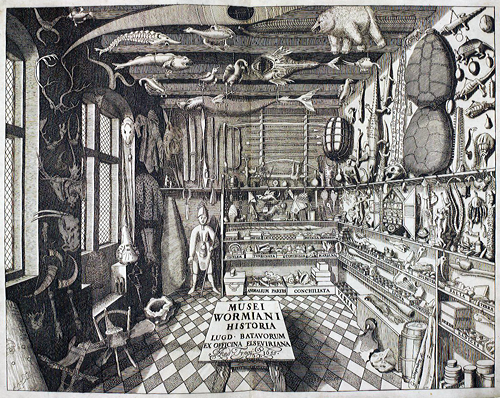Undergraduate Seminar: Chambers of Wonder: The Origins of Museums of Art and Natural History

Meets With RCHUMS 334.011
Students who take this seminar will discover that the first museums in Europe and North America were strange places indeed. We expect to find oil paintings in one kind of museum and dinosaur bones in another, but in times past it was common to see such things displayed side by side. The first "cabinets of curiosity" were private spaces, accessible by invitation or by letter of recommendation, where a few people conversed about wondrous objects and exotic artifacts. Not surprisingly, the origins of these collections coincided with the age of exploration and the European discovery of Asia, Africa and the Americas. As we will see, collections became more broadly educational and more commercial as they became more public during the 18th-century. Gradually, the dinosaur bones, shells, meteorites and exotic plants and animals (naturalia) found homes in natural history museums, while rarities of human skill (artificialia) moved to the walls and display cases of art museums. Students will learn about the challenges of separating art from nature in case studies from the 1500sto the 1800s, and we will have opportunities to consider our own struggles with such distinctions today. Class discussions and readings will enhance students' knowledge of collections with information about the experiences of early museum goers—wonder, curiosity and terror being high on the list of reported emotions. Visitors often reacted to the sight of monstrous deformities or to things explorers brought to Europe that seemed equally bizarre. We will discover over the course of the term that many works of art were deliberately made to push the boundary between art and nature, even to the point of incorporating animal parts into paintings or dressing up anatomical specimens in fashionable clothing. Students are likely to find echos of this boundary-pushing in our own fascination with artificial life forms and our own ethical questions about the spectacle of human remains in places like the Mütter Museum in Philadelphia or the controversial travelling exhibition Body Worlds.
Textbooks/Other Materials: Two or three moderately-priced books will be required in addition to the writing handbook: Michael Harvey, The Nuts and Bolts of College Writing, 2nd ed., Indianapolis: Hackett, 2013. ISBN: 9781603848985
Estimated Cost of Materials: $50-100
HISTART Distribution Requirements: 3: Early Modern, 4. Modern and Contemporary, D. Europe and the US